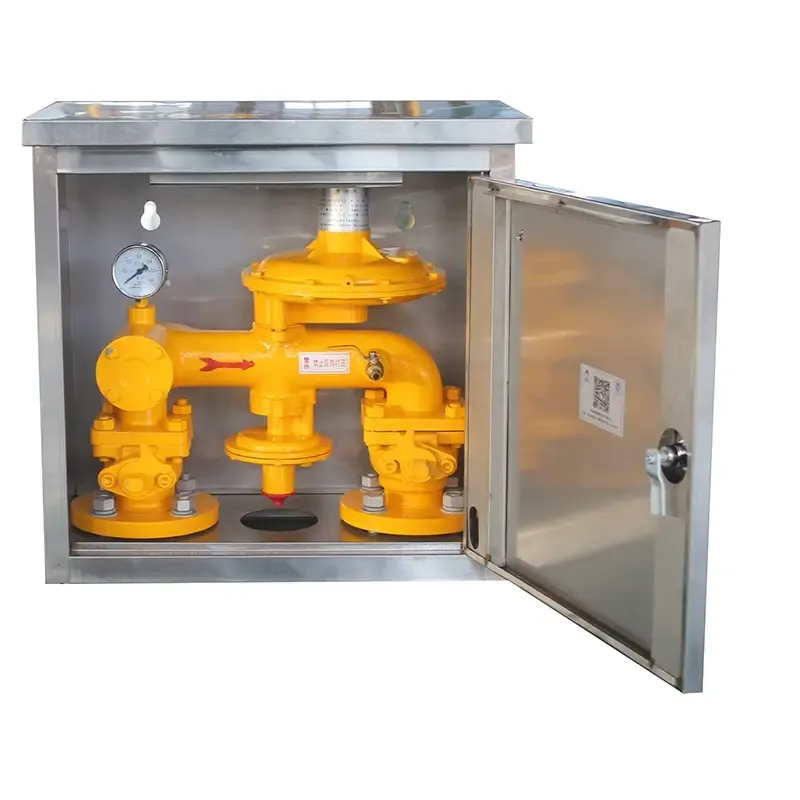
12 月 . 04, 2024 09:23
Back to list
Understanding Pressure Reducing Regulators and Their Importance in Various Applications
Understanding Pressure Reducing Regulators
Pressure reducing regulators (PRRs) are essential components in various industrial and residential applications, ensuring the safe and efficient use of gas and fluids. These devices are designed to lower the incoming pressure of fluids or gases to a predetermined level, providing a stable and controlled output pressure. This article explores the functionality, types, benefits, and applications of pressure reducing regulators, shedding light on their critical role in numerous industries.
How Pressure Reducing Regulators Work
At their core, pressure reducing regulators utilize a spring-loaded mechanism to maintain output pressure. When high-pressure fluid enters the regulator, it pushes against a diaphragm that is connected to a spring. As the pressure reaches the set point, the diaphragm moves to allow fluid to flow through the regulator, balancing the high inlet pressure with the desired outlet pressure. If the outlet pressure rises too high, the diaphragm closes, restricting the flow until the pressure stabilizes. This dynamic process allows regulators to provide a consistent output, regardless of fluctuations in the input pressure.
Types of Pressure Reducing Regulators
There are several types of pressure reducing regulators, each designed for specific applications and fluid types. The most common include
1. Single-Stage Regulators These regulators reduce pressure in one step and are typically used in applications where the inlet pressure is not excessively high. They are ideal for small gas appliances and some industrial applications.
2. Two-Stage Regulators These regulators use two distinct stages to reduce pressure incrementally, making them suitable for applications with high inlet pressures. Two-stage regulators maintain a more stable output pressure, making them popular in medical gas systems and high-volume applications.
3. Pneumatic Regulators Designed for air and gas applications, these regulators control the pressure of compressed air systems, ensuring optimal performance in pneumatic tools and machinery.
4. Water Pressure Regulators Commonly used in residential settings, water pressure regulators adjust incoming water pressure to a safe level suitable for residential plumbing, preventing leaks and pipe damage.
Benefits of Using Pressure Reducing Regulators
The advantages of incorporating pressure reducing regulators into systems are numerous
pressure reducing regulators

- Safety By controlling and maintaining safe pressure levels, PRRs prevent overpressure situations that could lead to equipment failure or accidents. This is particularly critical in industrial processes and gas applications where high pressures can lead to hazards.
- Efficiency Regulators optimize the use of energy and resources by ensuring that systems operate at their ideal pressure. This results in reduced energy costs and improved overall system efficiency.
- Protecting Equipment Many devices and systems are designed to operate within specific pressure ranges. PRRs protect these systems by keeping pressure within designated limits, extending the lifespan of machinery and components.
- Consistent Performance In applications where consistent pressure is necessary, such as in chemical processing or food production, PRRs play a vital role in maintaining stable operating conditions.
Applications of Pressure Reducing Regulators
Pressure reducing regulators are employed across a diverse array of industries. Some notable applications include
- Gas Distribution In natural gas and propane systems, regulators ensure that gas is delivered at safe, usable pressures to homes and businesses.
- Manufacturing PRRs are used in various manufacturing processes, controlling air and fluid pressures to facilitate automation and maintain quality control.
- Medical Applications In medical facilities, PRRs are crucial for managing gas pressures in anesthesia machines and oxygen delivery systems, ensuring patient safety and comfort.
- Water Systems Residential and commercial plumbing systems utilize pressure reducing regulators to maintain safe and consistent water pressure, preventing damage to pipes and appliances.
Conclusion
Pressure reducing regulators are vital components in a multitude of systems, providing safety, efficiency, and stability across various applications. By understanding the functionality and types of regulators available, industries can select the appropriate systems to enhance performance, protect equipment, and ensure operational safety. As technology continues to advance, pressure reducing regulators will undoubtedly play an increasingly critical role in modern engineering and industry, adapting to meet the demands of an evolving world.
Latest news
-
Unlocking The Quality Gas Pressure ReducersNewsNov.01,2024
-
The Role of Gas Pressure Reducing StationsNewsNov.01,2024
-
The Importance and Functionality of Safety Relief ValvesNewsNov.01,2024
-
The Essential Role of Safety Valves in Natural Gas ApplicationsNewsNov.01,2024
-
The Essential Role of Gas Pressure RegulatorsNewsNov.01,2024
-
Enhance Your Premium Gas FiltersNewsNov.01,2024

